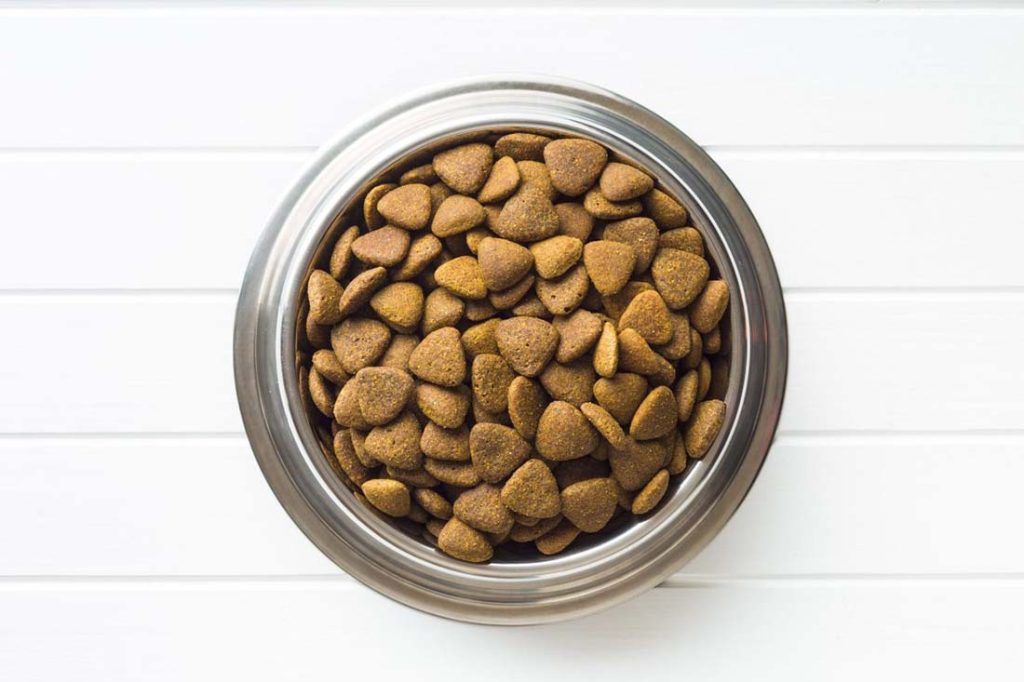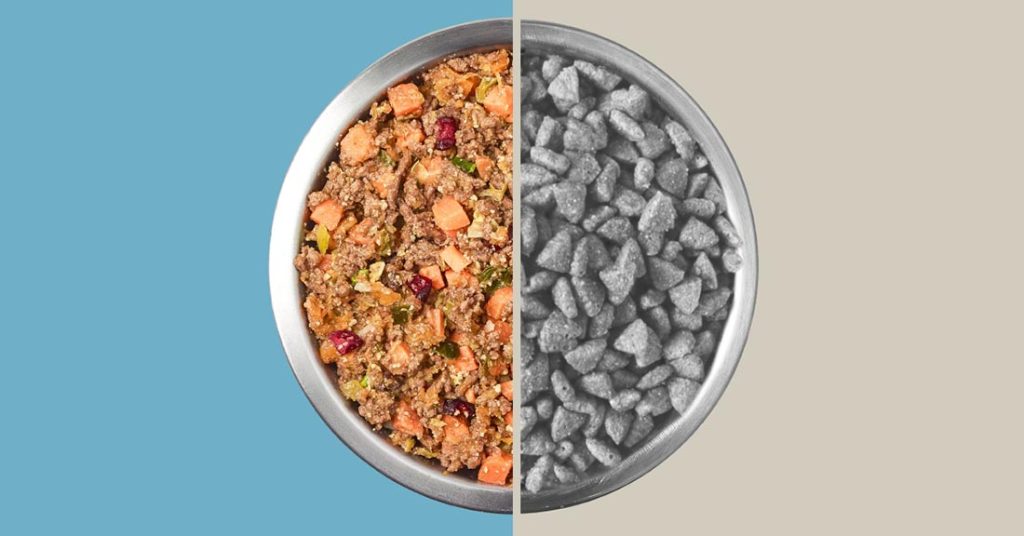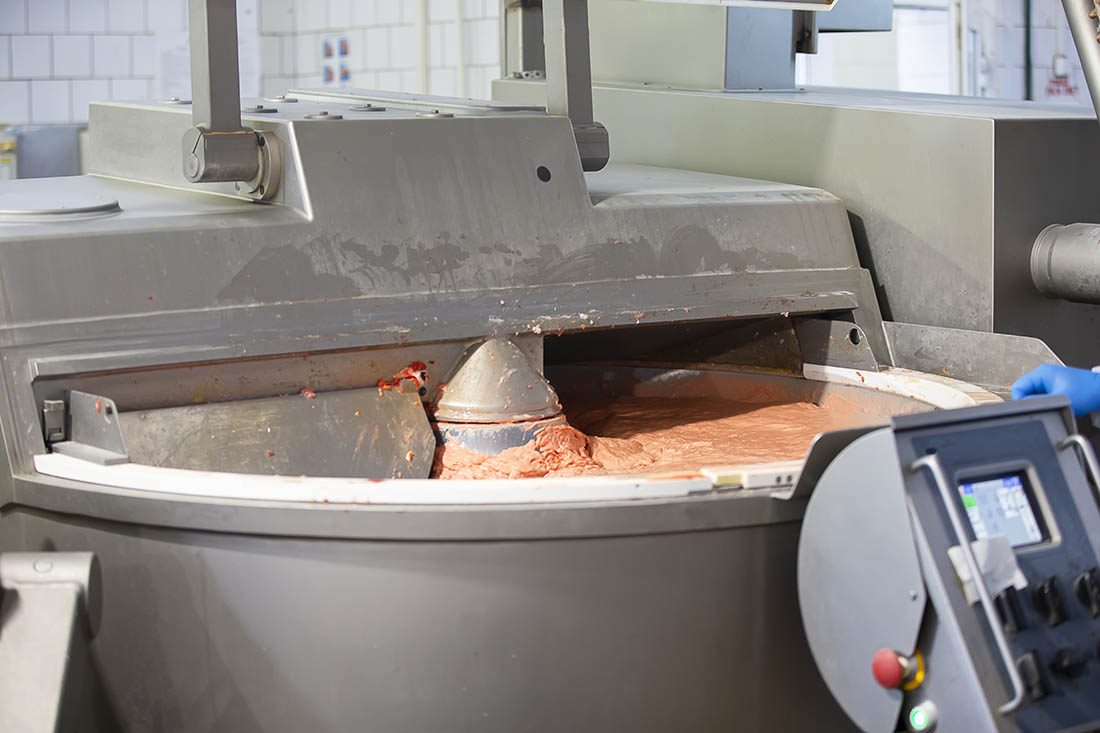For many dog owners, kibble is the go-to fuel for their furry friends. But have you ever wondered how those little brown bites come to be? The answer lies in a unique process called extrusion.
To best understand what extruded dog food is and how we got here, one first needs to dive into the history of the commercial pet food industry.
Kibble: How We Got Here

Before dry kibble was invented, dog food primarily came from a can (before that, it was human food table scraps and a biscuit — Spratt’s Dog & Puppy Cakes). Not only that, but the first canned dog food was made of horse meat! When World War II came around, the metal used to make canned dog food was needed for the war effort. No cans = no dog food.
In the 1950s, cereal boxes inspired General Mills and the Ralston Purina Company to use their machines to create a new kind of dog food that was shelf-stable but didn’t require metal for storage. Enter extruded dog food.
What Is Extruded Dog Food?
While dry dog food might seem simple, there’s a complex science behind those bite-sized morsels and the manufacturing process. Let’s delve into the world of extruded dog food, exploring the extrusion process, its effects, and how it impacts your furry friend’s wellness.
Simply put, extruded food is food made with raw ingredients that undergo a high-heat, high-pressure cooking process. Both wet and dry ingredients are mixed until they take a dough-like form, fed into a gelatinization machine that cooks it at extremely high temperatures, and then extruded (pressed out) through a machine that forms the final product: dried-up brown pellets.
Effects of Extrusion
Nutrient loss: While extrusion and preservatives offer advantages like optimized shelf life, the extreme cooking process of dry pet food dilutes some of its nutritional value. Some vitamins and heat-sensitive protein sources may lose their potency during extrusion. Supplements your dog needs may be required to offset the nutrient loss.
Artificial ingredients: Commercially produced dry dog and cat food uses artificial flavors and fats to increase palatability.
Digestibility: In one study, dogs who ate fresh whole food absorbed more nutrients than when on a diet of processed dry food. The researchers found that dogs fed the extruded diet had to eat more to maintain their body weight.
Navigating the Dog Food Maze: Informed Choices for Your Pup

Understanding extrusion can offer pet parents valuable insights into their pet’s food and help them make informed choices.
With so many dog food formulations available, choosing the right one can be overwhelming. Here are some key factors for pet owners to consider:
- AAFCO Compliance: Ensure the food meets the Association of American Feed Control Officials (AAFCO) nutritional guidelines for your dog’s life stage and activity level. That way you know it meets your dog’s nutritional requirements.
- Food Ingredient Quality: Look for whole, recognizable ingredients like meat, fish, and vegetables.
- Protein Sources: Choose high-quality protein sources like chicken, fish, or lamb, as they provide essential amino acids for muscle development. Avoid meat “meals,” unnecessary by-products, and raw meat.
- Carbohydrate Content: Dogs thrive on complex carbohydrates, like whole grains, for sustained energy. Limit simple carbohydrates like corn or wheat fillers.
- Fats and Fatty Acids: Healthy fats are crucial for skin and coat health. Choose diets rich in omega-3 and omega-6 fatty acids.
Remember, open communication with your veterinarian is crucial when choosing the best dog diet for your furry companion. They may be able to help you navigate the complexities of pet food production, considering your dog’s unique needs and preferences.
History of Dog Food in America At-a-Glance
Early Days (Mid-1800s):
- 1860s: Enter James Spratt, the inventor of the world’s first commercial dog biscuit in London, England. His blend of wheat, veggies, beef blood, and beetroot hit the American market in 1890. Households started feeding dogs fibrine dog cakes in the middle ages of dog food.
- Convenience takes the leash: The Industrial Revolution and busy urban life fueled the demand for ready-made food. Other companies joined the game, crafting their own biscuit and kibble recipes for companion animals.
The 20th Century: Rise of Modern Dog Food:
- 1922: Canned food enters the scene with “Ken-L Ration,” made from surplus horse meat. Jingles and marketing pushed its popularity.
- 1950s: Commercial dog food gets a boost with extrusion technology post WWII, allowing new shapes and flavors.
- 1960s: The Pet Food Institute launches campaigns promoting commercially prepared dog food as the superior choice, shifting pet owner perceptions.
Modern Era (Late 20th Century – Present):
- Focus on variety: Specialty diets, breed-specific formulas, and premium ingredients hit the dog food market and rise in popularity.
- Health concerns: Pet food manufacturer recalls and controversies spark awareness of ingredients and quality. Owners seek transparency and natural options.
- Boutique diets and raw food: Distrust in pet food companies grows. Questionably safe raw diets and grain-free diets hit the pet nutrition scene.
- The future barks! Fresh food, human-grade ingredients, and sustainability are shaping the next chapter of dog nutrition in America.
The history of dog food in the USA is fascinating and complex, reflecting changing societal views on pets, nutritional science, and marketing. There are a lot of hits and misses. By doing your research and becoming a more informed pet parent, you can make the best decisions for your pet!
